Evaluating Circular Economy under a Multi-Parametric Approach: A Technological Review
Abstract
1. Introduction
1.1. Evolutionary Definitions and Designing Features at the Circular Economy Framework
1.2. Review Orientation and Reasoning
2. Functionality of Circular Economy at the Context of Wastewater Management
3. Evaluation of Resources at the Context of Circular Economy
- Indicators are considered as basic tools in the provision of information about the state of the environment, thus contributing to awareness among public authorities and the population in general.
- Indicators can be used in the preparation and the evaluation of environmental policies.
3.1. Multi-Criteria Decision Making (MCDM)
3.2. Life Cycle Assessment (LCA)
3.3. The Energy–Water–Food Nexus towards a Cleaner Future of Improving Circular Economy
4. Technologies Developed in the Context of Waste Management and the Circular Economy
4.1. Composting Technology and Recovery of Nutrients from Urban Waste Management
4.2. Technologies in Refuse Derived Fuel and the Organic Rankine Cycle
4.3. Petrochemical Technology and Waste Management
- The CE-evaluation was determined by a multi-index comprehensive evaluation method. This is an index scoring method based on weighted average, which combines the single index evaluation value (a dimensionless result) of multiple indexes into one (or several) comprehensive evaluation value by means of weighted average. The advancements of this method are that of conciseness, intuition, clear conclusion, and strong maneuverability. Besides, the resource utilization rate of solid waste in the petrochemical industry is determined by crude oil, coal, natural gas and electric power, while the output value of the aforementioned comprehensive utilization products of “waste-types” are that of the industrial output value per unit energy source, the resource utilization efficiency, and the recycling utilization rate of resources, being all improved (at the reference period of the study reviewed).
- The rate of change in the final disposal of industrial waste and the caused environmental pollution are very unstable.
- Pollution of the atmosphere and water resources should not be ignored.
- The petrochemical industry is an intensive industry with energy, water resource and resource consumption. It is also the most promising, most qualified, and most urgent industry that needs to develop a recycling economy.
- This CE approach in the petrochemical industry necessitates a compliance with the requirements of CE development, using CE development principles and theories as a guide constructed by a CE evaluation index system.
- The selection of 24 quantitative indicators covering a range of the aspects, including resource utilization, resource recycling, and waste disposal. All these weight indicators have to effectively, objectively, and accurately determine the development of a CE in the petrochemical industry from 2014 to 2017 in China.
4.4. Biological Drying Technology at the Context of Organic Waste Management
5. Organic Waste Management at the Context of Circular Economy
5.1. Anaerobic Digestates
5.2. Key Indicators of Organic Waste Management at the Context of Circular Economy
6. Agrarian Development at the Context of Circular Economy
6.1. Key Indicators of Agrarian Development at the Context of Green Economy
6.2. Key Indicators of Agrarian Development in the Context of Agri-Food
7. Food Waste Management in the Context of Circular Economy
7.1. Food Waste Management and Treatment Hierarchy
7.2. Food Waste Management of Composting and Recycling
7.3. Key Indicators of Food Waste Management at the Context of Circular Economy
8. Human Wastewater Management at the Framework of Circular Economy
Key Indicators of Blackwater Management at the Context of the Circular Economy
9. Discussion
9.1. Developmental Strategies and Socio-Environmental Impact in the Context of the Circular Economy
9.2. Discussion on Terminology Instruments and CE Models
- Product Lifecycle Stages: implying those lifecycle phases (i.e., beginning, middle, or end of life) which are considered for CE evaluation;
- Variables: implying types of variables (declined in energy, material, and other resources) which are considered and measured;
- Circularity Degree: implying the economic, environmental, or social perspectives used to analyze variables in the methodologies.
10. Conclusions
10.1. Current Situation and Feasibility Propositions of Socio-Environmental Significance
10.2. Future Research Orientations
Author Contributions
Funding
Conflicts of Interest
References
- Geissdoerfer, M.; Savaget, P.; Bocken, N.; Jan Hultink, E. The Circular Economy—A New Sustainability Paradigm? J. Clean. Prod. 2017, 143, 757–768. [Google Scholar] [CrossRef]
- De los Rios, I.C.; Charnley, F.J.S. Skills and capabilities for a sustainable and circular economy: The changing role of design. J. Clean. Prod. 2017, 160, 109–122. [Google Scholar] [CrossRef]
- Tukker, A.; Tischner, U. Product-services as a research field: Past, present and future. Reflections from a decade of research. J. Clean. Prod. 2006, 14, 1552–1556. [Google Scholar] [CrossRef]
- Tukker, A. Product services for a resource-efficient and circular economy—A review. J. Clean. Prod. 2015, 97, 76–91. [Google Scholar] [CrossRef]
- Merli, R.; Presiozi, M. Acabora Alesia How do scholars approach circular economy? A systematic literature review. J. Clean. Prod. 2018, 178, 703–722. [Google Scholar] [CrossRef]
- Ghosh, S.K.; Agamuthu, P. Circular economy: The way forward. Waste Manag. Res. 2018, 36, 481–482. [Google Scholar] [CrossRef]
- Gregorio, V.F.; Pie, L.; Terceno, A. A Systematic Literature Review of Bio, Green and Circular Economy Trends in Publications in the Field of Economics and Business Management. Sustainability 2018, 10, 4232. [Google Scholar] [CrossRef]
- Grigoropoulos, C.J.; Doulos, L.T.; Zerefos, S.; Tsangrassoulis, A.; Bhusal, P. Estimating the benefits of increasing the recycling rate of lamps from the domestic sector: Methodology, opportunities and case study. Waste Manag. 2020, 101, 188–199. [Google Scholar] [CrossRef]
- Sassanelli, C.; Rosa, P.; Rocca, P.; Terzi, S. Circular economy performance assessment methods: A systematic literature review. J. Clean. Prod. 2019, 229, 440–453. [Google Scholar] [CrossRef]
- Salguero-Puerta, L.; Leyva-Diaz, J.C.; Cortes-Garcia, F.J.; Molina-Moreno, V. Sustainability Indicators Concerning Waste Management for Implementation of the Circular Economy Model on the University of Lome (Togo) Campus. Int. J. Environ. Res. Public Health 2019, 16, 2234. [Google Scholar] [CrossRef]
- Borrello, M.; Caracciolo, F.; Lombardi, A.; Pascucci, S.; Cembalo, L. Consumers’ perspective on circular economy strategy for reducing food waste. Sustainability 2017, 9, 141. [Google Scholar] [CrossRef]
- Birol, E.; Das, S. Estimating the value of wastewater treatment: The case of River Ganga, India. J. Environ. Manag. 2010, 91, 2163–2171. [Google Scholar] [CrossRef] [PubMed]
- Gaustad, G.; Krystofik, M.; Bustamante, M.; Badami, K. Circular economy strategies for mitigating critical material supply issues. Resour. Conserv. Recycl. 2018, 135, 24–33. [Google Scholar] [CrossRef]
- Kapsalis, V.C.; Kyriakopoulos, G.L.; Aravossis, K.G. Investigation of Ecosystem Services and Circular Economy Interactions under an Inter-organizational Framework. Energies 2019, 12, 1734. [Google Scholar] [CrossRef]
- Masullo, A. Organic wastes management in a circular economy approach: Rebuilding the link between urban and rural areas. Ecol. Eng. 2017, 101, 84–90. [Google Scholar] [CrossRef]
- Wang, J. Study on construction and application of circular economy evaluation index system in petrochemical industry. Chem. Eng. Trans. 2018, 66, 1423–1428. [Google Scholar] [CrossRef]
- Thomas, L.; Oldfield, E.W. The implications of stakeholder perspective for LCA of wasted food and green waste. J. Clean. Prod. 2018, 170, 1554–1564. [Google Scholar] [CrossRef]
- Nunez-Cacho, P.; Molina-Moreno, V.; Corpas-Iglesias, F.A.; Cortes-Garcia, F.J. Family Businesses Transitioning to a Circular Economy Model: The Case of Mercadona. Sustainability 2018, 10, 538. [Google Scholar] [CrossRef]
- Aravossis, K.G.; Kapsalis, V.C.; Kyriakopoulos, G.L.; Xouleis, T.G. Development of a Holistic Assessment Framework for Industrial Organizations. Sustainability 2019, 11, 3946. [Google Scholar] [CrossRef]
- Iacovidou, E.; Velis, C.A.; Purnell, P.; Zwirner, O.; Brown, A.; Hahladakis, J.; Millward-Hopkins, J.; Williams, P.T. Metrics for optimising the multi-dimensional value of resources recovered from waste in a circular economy: A critical review. J. Clean. Prod. 2017, 166, 910–938. [Google Scholar] [CrossRef]
- Shukor, J.-A.; Omar, M.-F.; Kasim, M.-M.; Jamaludin, M.-H.; Naim, M.-A. Assessment of composting technologies for organic waste management. Int. J. Technol. 2018, 8, 1579–1587. [Google Scholar] [CrossRef]
- Kılkıs, S.; Kılkıs, B. Integrated circular economy and education model to address aspects of an energy-water-food nexus in a dairy facility and local contexts. J. Clean. Prod. 2017, 167, 1084–1098. [Google Scholar] [CrossRef]
- Zamparas, M.; Kapsalis, V.; Kyriakopoulos, G.; Aravossis, K.; Kanteraki, A.; Vantarakis, A.; Kalavrouziotis, I.K. Medical waste management and environmental assessment in the Rio University Hospital, Western Greece. Sustain. Chem. Pharm. 2019, 13, 100–163. [Google Scholar] [CrossRef]
- Nizami, A.S.; Rehan, M.; Waqas, M.; Naqvi, M.; Ouda, O.K.M.; Shahzad, K.; Miandad, R.; Khan, M.Z.; Syamsiro, M.; Ismail, I.M.I.; et al. Waste biorefineries: Enabling circular economies in developing countries. Bioresour. Technol. 2017, 241, 1101–1117. [Google Scholar] [CrossRef]
- Stiles, W.A.V.; Styles, D.; Chapman, S.P.; Esteves, S.; Bywater, A.; Melville, L.; Silkina, A.; Lupatsch, I.; Fuentes Grünewald, C.; Lovitt, R.; et al. Using microalgae in the circular economy to valorise anaerobic digestate: Challenges and opportunities. Bioresour. Technol. 2018, 267, 732–742. [Google Scholar] [CrossRef]
- Ingrao, C.; Faccilongo, N.; Di Gioia, L.; Messineo, A. Food waste recovery into energy in a circular economy perspective: A comprehensive review of aspects related to plant operation and environmental assessment. J. Clean. Prod. 2018, 184, 869–892. [Google Scholar] [CrossRef]
- Ghisellini, P.; Protano, G.; Viglia, S.; Gaworski, M.; Setti, M.; Ulgiati, S. Integrated agricultural and dairy production within a circular economy framework. A comparison of Italian and Polish farming systems. J. Environ. Account. Manag. 2014, 2, 367–384. [Google Scholar] [CrossRef]
- De Man, R.; Friege, H. Circular economy: European policy on shaky ground. Waste Manag. Res. 2016, 34, 93–95. [Google Scholar] [CrossRef]
- Zamparas, M.; Kapsalis, V.C.; Kanteraki, A.E.; Vardoulakis, E.; Kyriakopoulos, G.L.; Drosos, M.; Kalavrouziotis, I. Novel composite materials as P-adsorption agents and their potential application as fertilizers. Glob. Nest J. 2019, 21, 48–57. [Google Scholar]
- Bekchanov, M.; Mirzabaev, A. Circular economy of composting in Sri Lanka: Opportunities and challenges for reducing waste related pollution and improving soil health. J. Clean. Prod. 2018, 202, 1107–1119. [Google Scholar] [CrossRef]
- Ahmedelbdawy, W.M.A.; Abuelnuor, A.A.A.; Omara, A.A.M.; Adil Taha, S. An experimental study on landfill technology to produce an alternative source of energy from organic waste. In Proceedings of the International Conference on Computer, Control, Electrical, and Electronics Engineering (ICCCEEE 2018), Khartoum, Sudan, 12–14 August 2018; 5p. [Google Scholar]
- Gallardo, A.; Carlos, M.; Bovea, M.D.; Colomer, F.J.; Albarrán, F. Analysis of refuse-derived fuel from the municipal solid waste reject fraction and its compliance with quality standards. J. Clean. Prod. 2014, 83, 118–125. [Google Scholar] [CrossRef]
- Panahandeh, A.; Asadollahfardi, G.; Mirmohammadi, M. Life cycle assessment of clinker production using refuse-derived fuel: A case study using refuse-derived fuel from Tehran municipal solid waste: Reducing emissions and conserving fossil fuel in cement making and making beneficial use of solid waste. Environ. Qual. Manag. 2017, 27, 57–66. [Google Scholar] [CrossRef]
- Chiemchaisri, C.; Charnnok, B.; Visvanathan, C. Recovery of plastic wastes from dumpsite as refuse-derived fuel and its utilization in small gasification system. Bioresour. Technol. 2010, 101, 1522–1527. [Google Scholar] [CrossRef] [PubMed]
- Liu, Z.; Wang, H.-Q.; Zhou, Y.-Y.; Liu, J.-W.; Zhang, X.-D.; Hu, G.-W. Effect of microwave chlorine depleted pyrolyzate on the combustion characteristics of refuse derived fuel derived from package waste. Waste Manag. 2018, 82, 1–8. [Google Scholar] [CrossRef] [PubMed]
- Edo, M.; Budarin, V.; Aracil, I.; Persson, P.-E.; Jansson, S. The combined effect of plastics and food waste accelerates the thermal decomposition of refuse-derived fuels and fuel blends. Fuel 2016, 180, 424–432. [Google Scholar] [CrossRef]
- Manya, J.J.; Garcia-Ceballos, F.; Azuara, M.; Latorre, N.; Royo, C. Pyrolysis and char reactivity of a poor-quality refuse-derived fuel (RDF) from municipal solid waste. Fuel Process. Technol. 2015, 140, 276–284. [Google Scholar] [CrossRef]
- Younan, Y.; van Goethem, M.W.M.; Stefanidis, G.D. A particle scale model for municipal solid waste and refuse-derived fuels pyrolysis. Comput. Chem. Eng. 2016, 86, 148–159. [Google Scholar] [CrossRef]
- Baldasso, E.; Andreasen, J.G.; Mondejar, M.E.; Larsen, U.; Haglind, F. Technical and economic feasibility of organic Rankine cycle-based waste heat recovery systems on feeder ships: Impact of nitrogen oxides emission abatement technologies. Energy Convers. Manag. 2019, 183, 577–589. [Google Scholar] [CrossRef]
- Mohammadkhani, F.; Shokati, N.; Mahmoudi, S.M.S.; Yari, M.; Rosen, M.A. Exergoeconomic assessment and parametric study of a Gas Turbine-Modular Helium Reactor combined with two Organic Rankine Cycles. Energy 2014, 65, 533–543. [Google Scholar] [CrossRef]
- Shokati, N.; Mohammadkhani, F.; Yari, M.; Mahmoudi, S.M.S.; Rosen, M.A. A comparative exergoeconomic analysis of waste heat recovery from a gas turbine-modular helium reactor via organic rankine cycles. Sustainability 2014, 6, 2474–2489. [Google Scholar] [CrossRef]
- Kazmierczak, U.; Blachowski, J.; Gοrniak-Zimroz, J. Multi-Criteria Analysis of Potential Applications of Waste from Rock Minerals Mining. Appl. Sci. 2019, 9, 441. [Google Scholar] [CrossRef]
- Wozniak, J.; Pactwa, K. Overview of Polish Mining Wastes with Circular Economy Model and Its Comparison with Other Wastes. Sustainability 2018, 10, 3994. [Google Scholar] [CrossRef]
- Yang, B.; Hao, Z.; Jahng, D. Advances in biodrying technologies for converting organic wastes into solid fuel. Dry. Technol. 2017, 35, 1950–1969. [Google Scholar] [CrossRef]
- Irawan, D.; Arifin, Z. Glucose synthesis of organic waste with ultrasonic technology using chloride acid catalyst of hydrolysis process. Rasayan J. Chem. 2017, 10, 1302–1304. [Google Scholar]
- Furlong, C.; Rajapaksha, N.S.; Butt, K.R.; Gibson, W.T. Is composting worm availability the main barrier to large-scale adoption of worm-based organic waste processing technologies. J. Clean. Prod. 2017, 164, 1026–1033. [Google Scholar] [CrossRef]
- Naidoo, K.; Swatson, H.; Yobo, K.S.; Arthur, G.D. Boosting Our Soil With Green Technology: Conversion of Organic Waste Into “Black Gold”. In Food Bioconversion—Handbook of Food Bioengineering; Academic Press: Cambridge, MA, USA, 2017; Chapter 15; pp. 491–510. [Google Scholar]
- Lim, S.-L.; Lee, L.-H.; Wu, T.-Y. Sustainability of using composting and vermicomposting technologies for organic solid waste biotransformation: Recent overview, greenhouse gases emissions and economic analysis. J. Clean. Prod. 2016, 111, 262–278. [Google Scholar] [CrossRef]
- Zamparas, M.; Kalavrouziotis, I.K. Healthcare waste management in Greece. The example of health region of Western Greece, Peloponnese, Epirus and Ionian Islands. Glob. Nest J. 2018, 20, 96–102. [Google Scholar]
- Russo, A. Innovation and circular economy in water sector: The CAP group. In The Italian Water Industry; Springer: Cham, Switzerland, 2018; pp. 215–224. [Google Scholar] [CrossRef]
- Rolewicz-Kalinska, A.; Oniszk-Popławska, A.; Wesołowska, J.; Rynska, E.D. Conditions for the development of anaerobic digestion technologies using the organic fraction of municipal solid waste: Perspectives for Poland. Environ. Dev. Sustain. 2016, 18, 1279–1296. [Google Scholar] [CrossRef]
- Smol, M.; Kulczycka, J.; Henclik, A.; Gorazda, K.; Wzorek, Z. The possible use of sewage sludge ash (SSA) in the construction industry as a way towards a circular economy. J. Clean. Prod. 2015, 95, 45–54. [Google Scholar] [CrossRef]
- Donia, E.; Mineo, A.M.; Sgroi, F. A methodological approach for assessing businness investments in renewable resources from a circular economy perspective. Land Use Policy 2018, 76, 823–827. [Google Scholar] [CrossRef]
- Kabbe, C. Circular economy: Bridging the gap between phosphorus recovery and recycling. Phosphorus Recovery Recycl. 2018, 45–57. [Google Scholar] [CrossRef]
- Molina-Sanchez, E.; Leyva-Diaz, J.-C.; Cortes-Garcia, F.-J.; Molina-Moreno, V. Proposal of Sustainability Indicators for the Waste Management from the Paper Industry within the Circular Economy Model. Water 2018, 10, 1014. [Google Scholar] [CrossRef]
- Alcon, F.; Pedrero, F.; Martin-Ortega, J.; Arcas, N.; Alarcon, J.J.; de Miguel, M.D. The non-market value of reclaimed wastewater for use in agriculture: A contingent valuation approach. Span. J. Agric. Res. 2010, 8, 187–196. [Google Scholar] [CrossRef]
- Borrello, M.; Lombardi, A.; Pascucci, S.; Cembalo, L. The seven challenges for transitioning into a bio-based circular economy in the agri-food sector. Recent Pat. Food Nutr. Agric. 2016, 8, 39–47. [Google Scholar] [CrossRef]
- Korhonen, J.; Honkasalo, A.; Seppala, J. Circular economy: The concept and its limitations. Ecol. Econ. 2018, 143, 37–46. [Google Scholar] [CrossRef]
- Jimenez-Rivero, A.; García-Navarro, J. Exploring factors influencing post-consumer gypsum recycling and landfilling in the European Union. Resour. Conserv. Recycl. 2017, 116, 116–123. [Google Scholar] [CrossRef]
- Gianni, A.; Zamparas, M.; Papadas, I.T.; Kehayias, G.; Deligiannakis, Y.; Zacharias, I. Monitoring and Modeling of Metal Concentration Distributions in Anoxic Basins: Aitoliko Lagoon, Greece. Aquat. Geochem. 2013, 19, 77–95. [Google Scholar] [CrossRef]
- Zamparas, M.; Drosos, M.; Deligiannakis, Y.; Zacharias, I. Eutrophication control using a novel bentonite humic-acid composite material Bephos™. J. Environ. Chem. Eng. 2015, 3, 3030–3036. [Google Scholar] [CrossRef]
- Moges, M.E.; Todt, D.; Heistad, A. Treatment of source-separated blackwater: A decentralized strategy for nutrient recovery towards a circular economy. Water 2018, 10, 463. [Google Scholar] [CrossRef]
- Zamparas, M.; Zacharias, I. Restoration of eutrophic freshwater by managing internal nutrient loads. A review. Sci. Total Environ. 2014, 496, 551–562. [Google Scholar] [CrossRef]
- Lakatos, E.S.; Cioca, L.-I.; Dan, V.; Ciomos, A.O.; Crisan, O.A.; Barsan, G. Studies and investigation about the attitude towards sustainable production, consumption and waste generation in line with circular economy in Romania. Sustainability 2018, 10, 865. [Google Scholar] [CrossRef]
- Arabatzis, G.; Kyriakopoulos, G.; Tsialis, P. Typology of regional units based on RES plants: The case of Greece. Renew. Sustain. Energy Rev. 2017, 78, 1424–1434. [Google Scholar] [CrossRef]
- Kyriakopoulos, G.L.; Arabatzis, G.; Tsialis, P.; Ioannou, K. Electricity consumption and RES plants in Greece: Typologies of regional units. Renew. Energy 2018, 127, 134–144. [Google Scholar] [CrossRef]
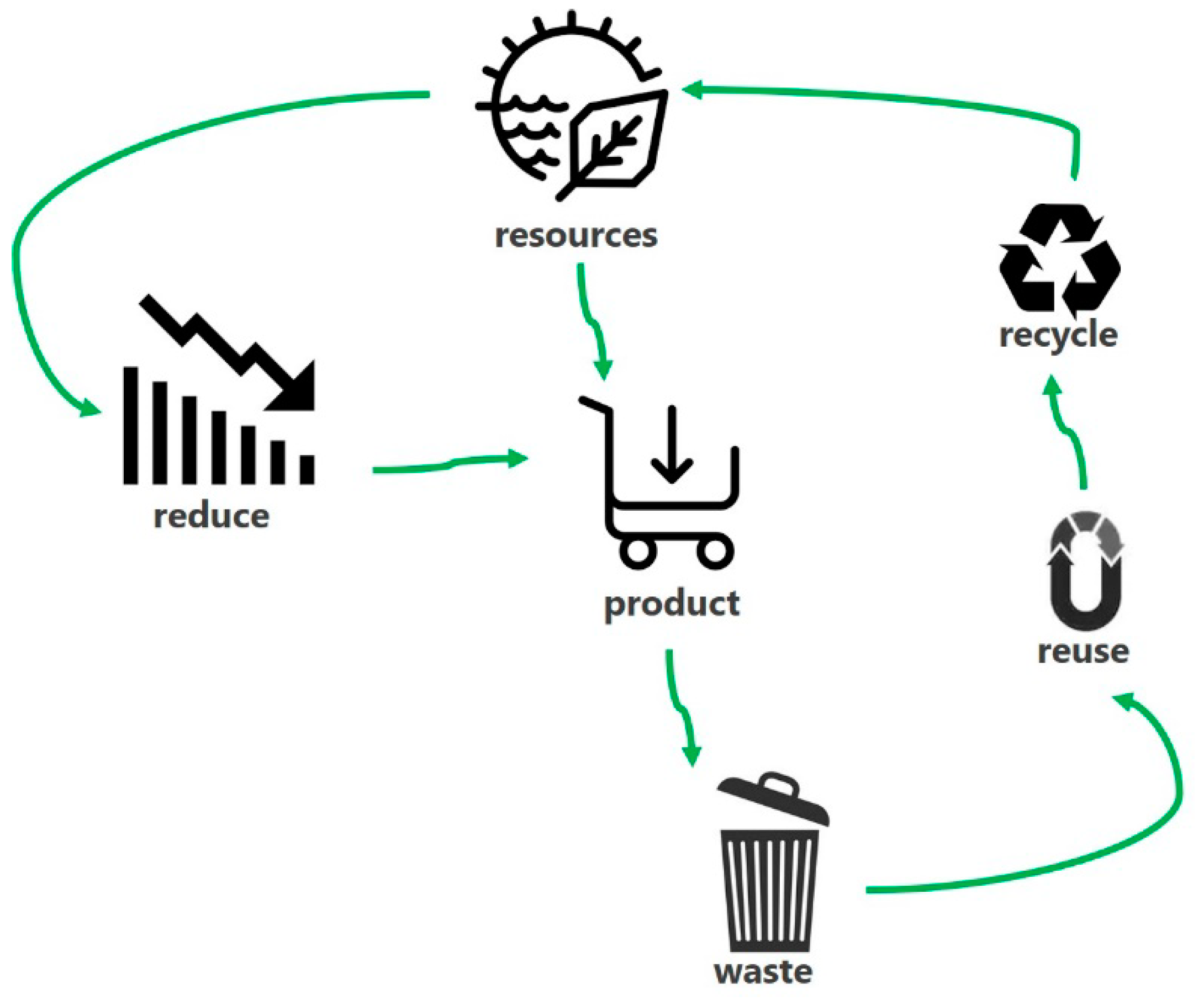
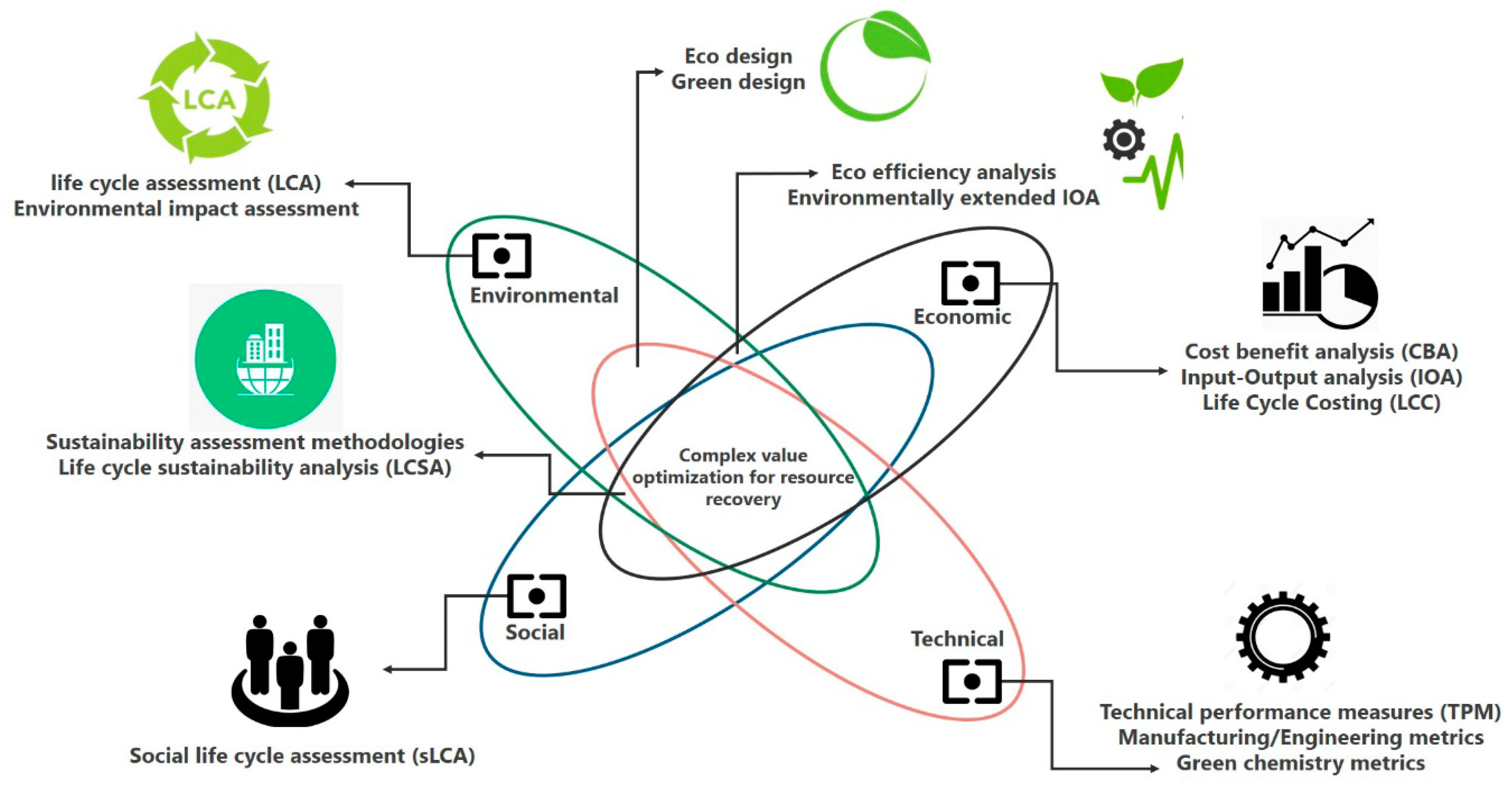
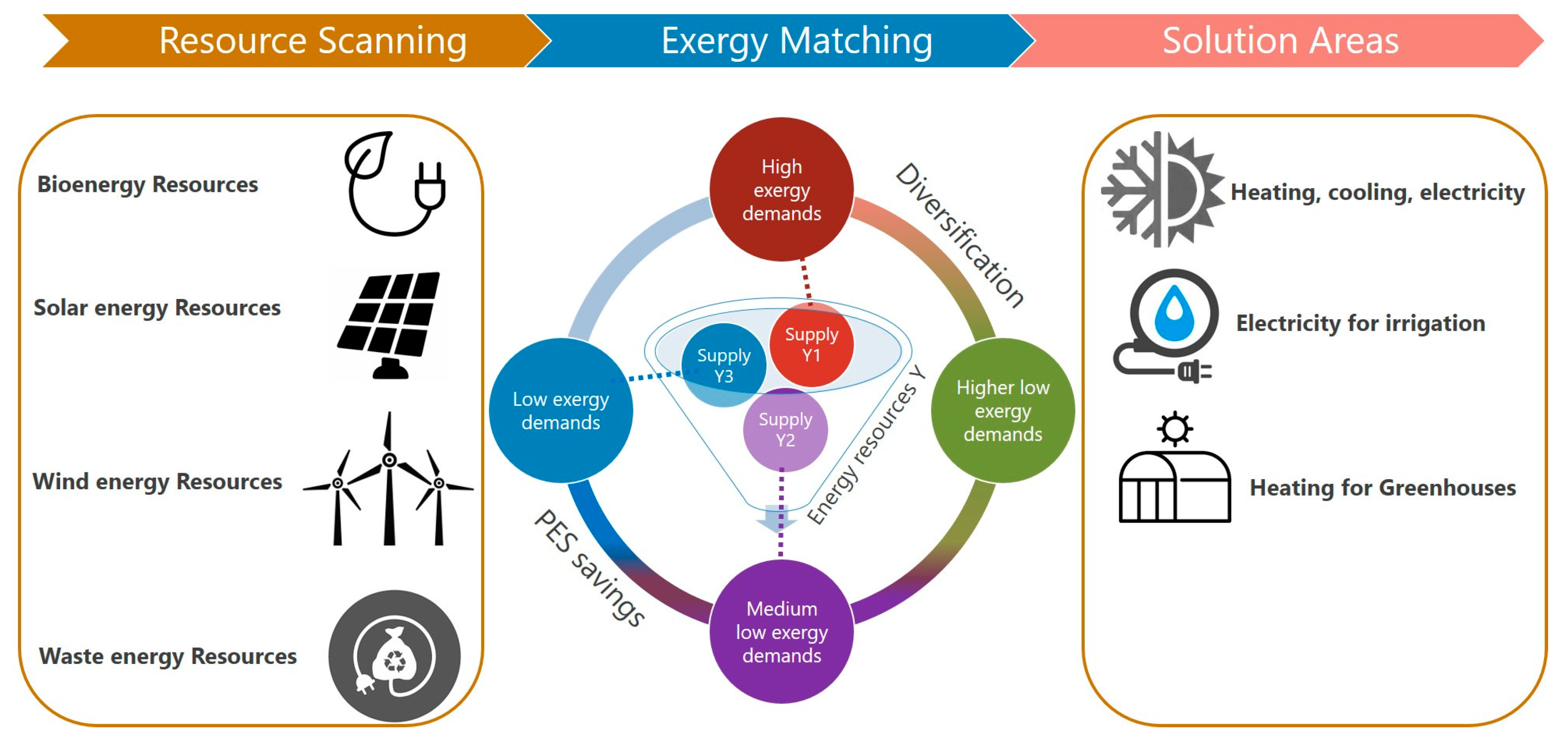
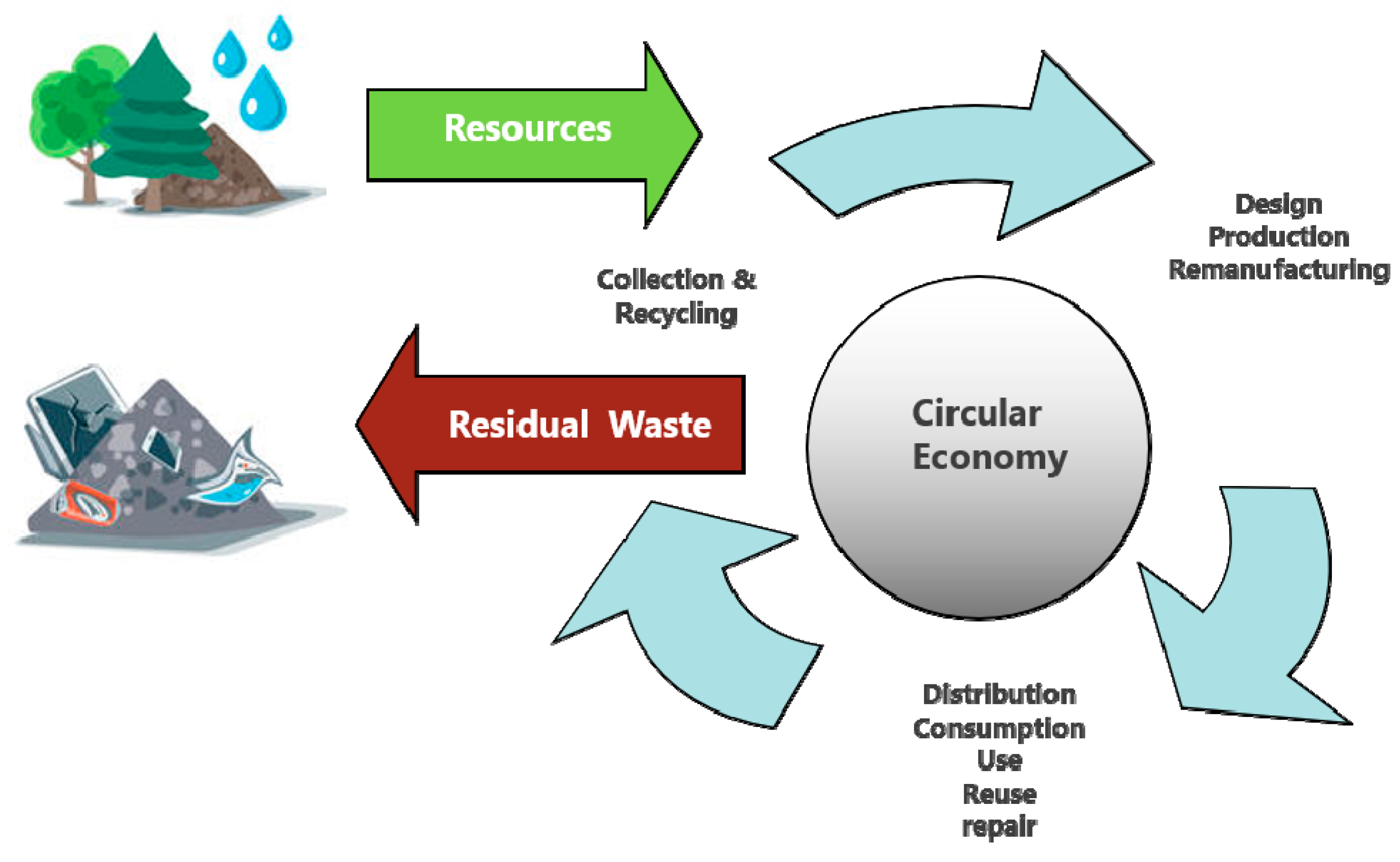
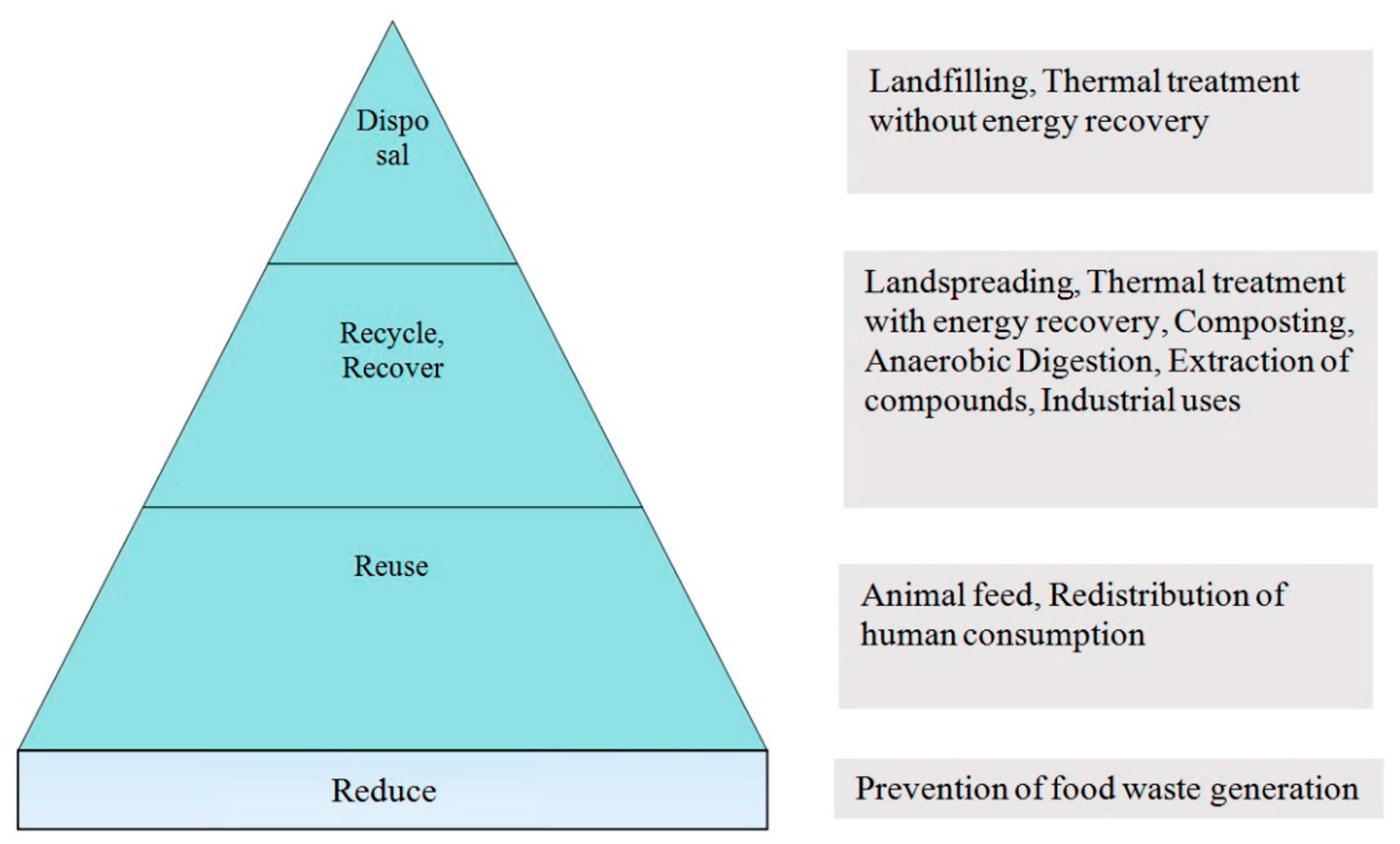
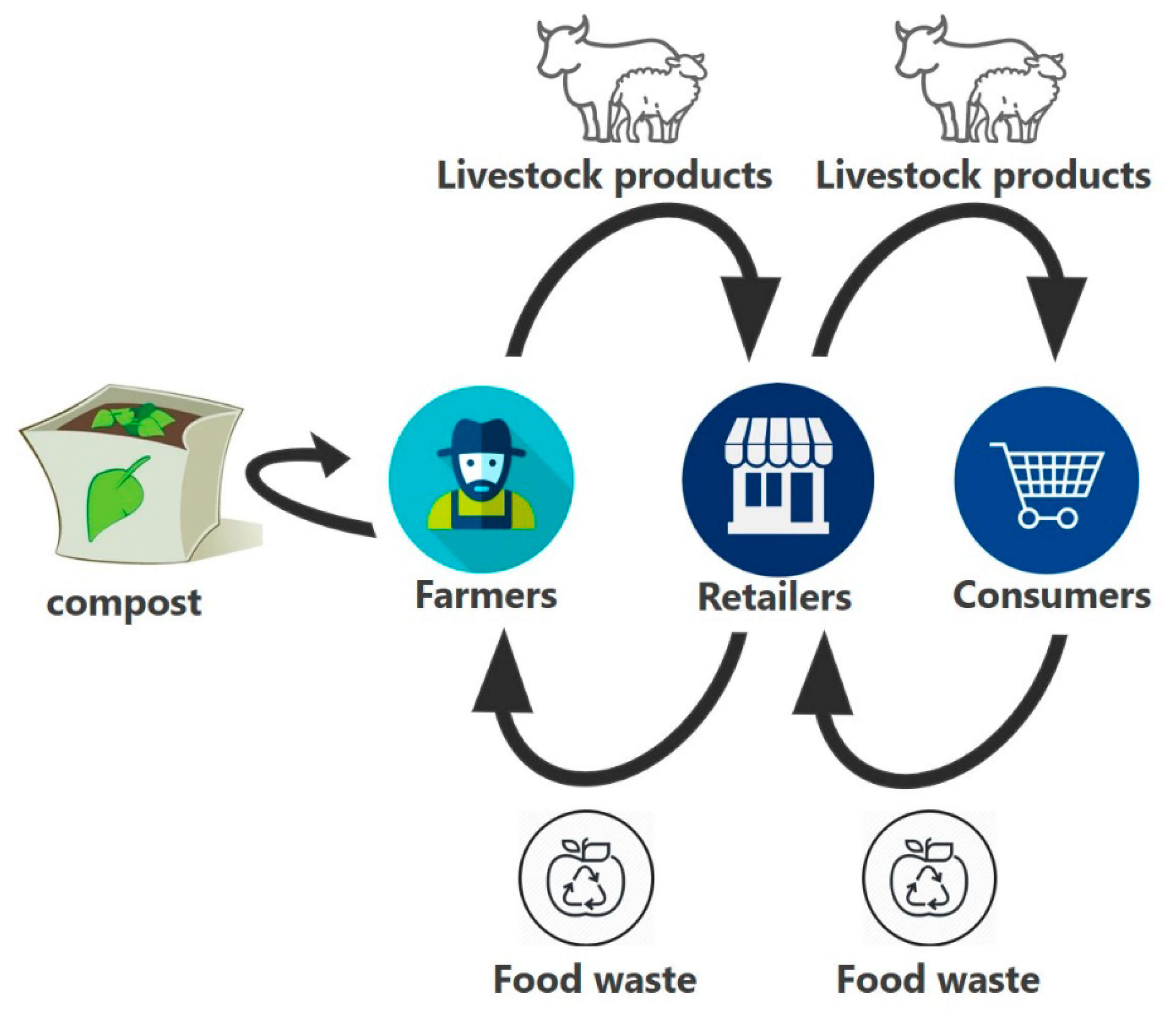
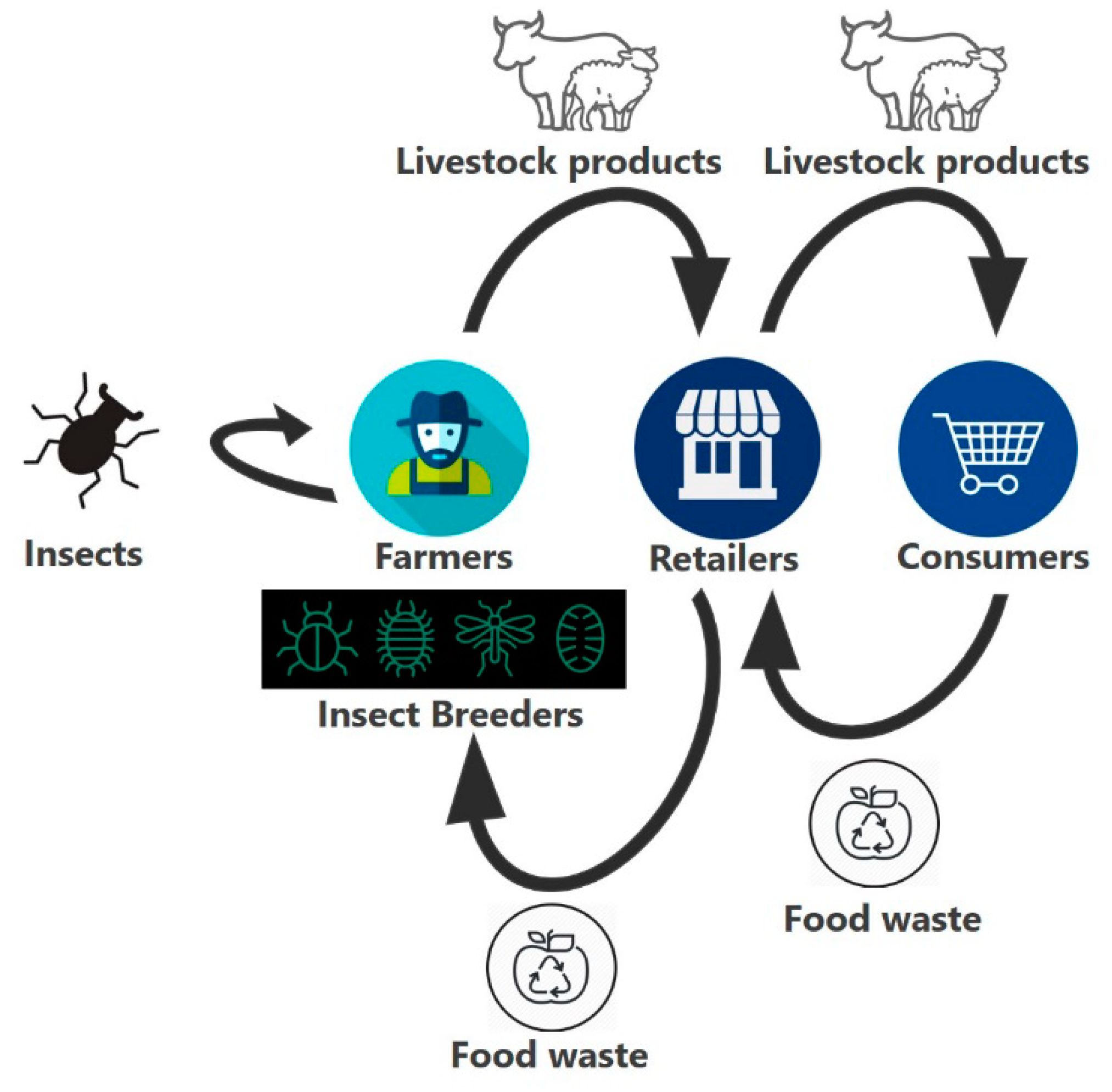
| Evaluation Method | Conceptualization |
|---|---|
| Life cycle | Valuation of the environmental impact at each one step of the product life cycle. |
| Clean production; Auditing | Standardization of procedures; investigation and diagnosis of production process; finding of high pollution reasoning, increased consumption, low efficiency; planning and promoting strategies of cleaner production and technologies of improved production. |
| Material flow analysis | Determination of material flow, diffusion, and utilization at urban contexts, in quantitative terms. |
© 2019 by the authors. Licensee MDPI, Basel, Switzerland. This article is an open access article distributed under the terms and conditions of the Creative Commons Attribution (CC BY) license (http://creativecommons.org/licenses/by/4.0/).
Share and Cite
Kyriakopoulos, G.L.; Kapsalis, V.C.; Aravossis, K.G.; Zamparas, M.; Mitsikas, A. Evaluating Circular Economy under a Multi-Parametric Approach: A Technological Review. Sustainability 2019, 11, 6139. https://doi.org/10.3390/su11216139
Kyriakopoulos GL, Kapsalis VC, Aravossis KG, Zamparas M, Mitsikas A. Evaluating Circular Economy under a Multi-Parametric Approach: A Technological Review. Sustainability. 2019; 11(21):6139. https://doi.org/10.3390/su11216139
Chicago/Turabian StyleKyriakopoulos, Grigorios L., Vasilis C. Kapsalis, Konstantinos G. Aravossis, Miltiadis Zamparas, and Alexandros Mitsikas. 2019. "Evaluating Circular Economy under a Multi-Parametric Approach: A Technological Review" Sustainability 11, no. 21: 6139. https://doi.org/10.3390/su11216139
APA StyleKyriakopoulos, G. L., Kapsalis, V. C., Aravossis, K. G., Zamparas, M., & Mitsikas, A. (2019). Evaluating Circular Economy under a Multi-Parametric Approach: A Technological Review. Sustainability, 11(21), 6139. https://doi.org/10.3390/su11216139









